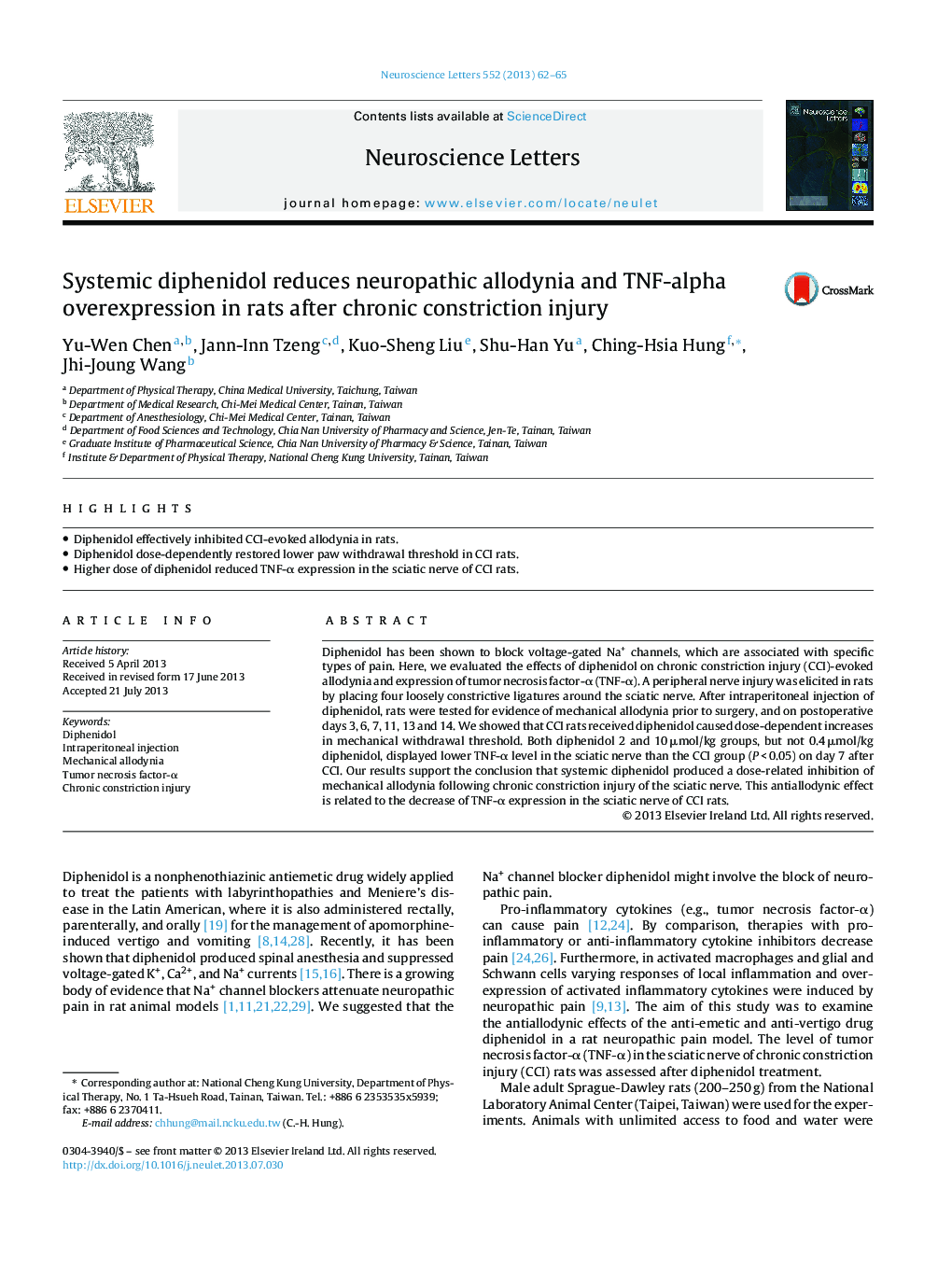| Article ID | Journal | Published Year | Pages | File Type |
|---|---|---|---|---|
| 6282785 | Neuroscience Letters | 2013 | 4 Pages |
Abstract
Diphenidol has been shown to block voltage-gated Na+ channels, which are associated with specific types of pain. Here, we evaluated the effects of diphenidol on chronic constriction injury (CCI)-evoked allodynia and expression of tumor necrosis factor-α (TNF-α). A peripheral nerve injury was elicited in rats by placing four loosely constrictive ligatures around the sciatic nerve. After intraperitoneal injection of diphenidol, rats were tested for evidence of mechanical allodynia prior to surgery, and on postoperative days 3, 6, 7, 11, 13 and 14. We showed that CCI rats received diphenidol caused dose-dependent increases in mechanical withdrawal threshold. Both diphenidol 2 and 10 μmol/kg groups, but not 0.4 μmol/kg diphenidol, displayed lower TNF-α level in the sciatic nerve than the CCI group (P < 0.05) on day 7 after CCI. Our results support the conclusion that systemic diphenidol produced a dose-related inhibition of mechanical allodynia following chronic constriction injury of the sciatic nerve. This antiallodynic effect is related to the decrease of TNF-α expression in the sciatic nerve of CCI rats.
Keywords
Related Topics
Life Sciences
Neuroscience
Neuroscience (General)
Authors
Yu-Wen Chen, Jann-Inn Tzeng, Kuo-Sheng Liu, Shu-Han Yu, Ching-Hsia Hung, Jhi-Joung Wang,
